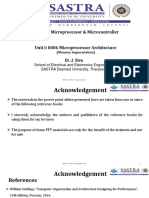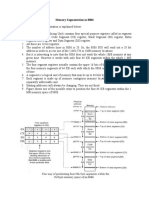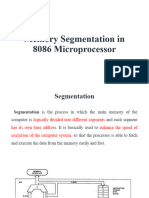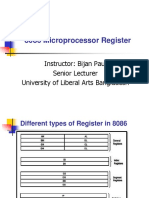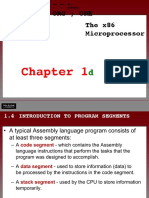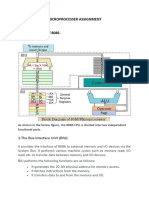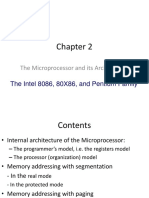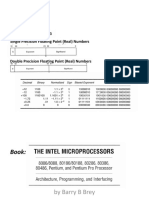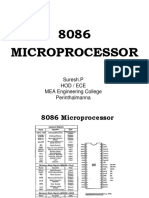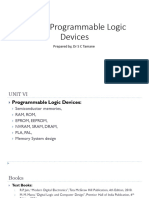0% found this document useful (0 votes)
87 views11 pagesSlide-3 (Memory Segmentation)
This document discusses memory segmentation in 8086 microprocessors. It explains that memory segmentation divides the 1MB physical memory into logical segments (code, data, stack, extra) to address problems with the 20-bit address bus. Each segment can be up to 64kB in size. The 20-bit physical address is calculated by the microprocessor from the 16-bit segment address and 16-bit offset address provided by the programmer. Memory segmentation allows programs to access more than 64kB of memory using only 16-bit addresses.
Uploaded by
Hafsaa Binte HarunCopyright
© © All Rights Reserved
We take content rights seriously. If you suspect this is your content, claim it here.
Available Formats
Download as PDF, TXT or read online on Scribd
0% found this document useful (0 votes)
87 views11 pagesSlide-3 (Memory Segmentation)
This document discusses memory segmentation in 8086 microprocessors. It explains that memory segmentation divides the 1MB physical memory into logical segments (code, data, stack, extra) to address problems with the 20-bit address bus. Each segment can be up to 64kB in size. The 20-bit physical address is calculated by the microprocessor from the 16-bit segment address and 16-bit offset address provided by the programmer. Memory segmentation allows programs to access more than 64kB of memory using only 16-bit addresses.
Uploaded by
Hafsaa Binte HarunCopyright
© © All Rights Reserved
We take content rights seriously. If you suspect this is your content, claim it here.
Available Formats
Download as PDF, TXT or read online on Scribd
/ 11
